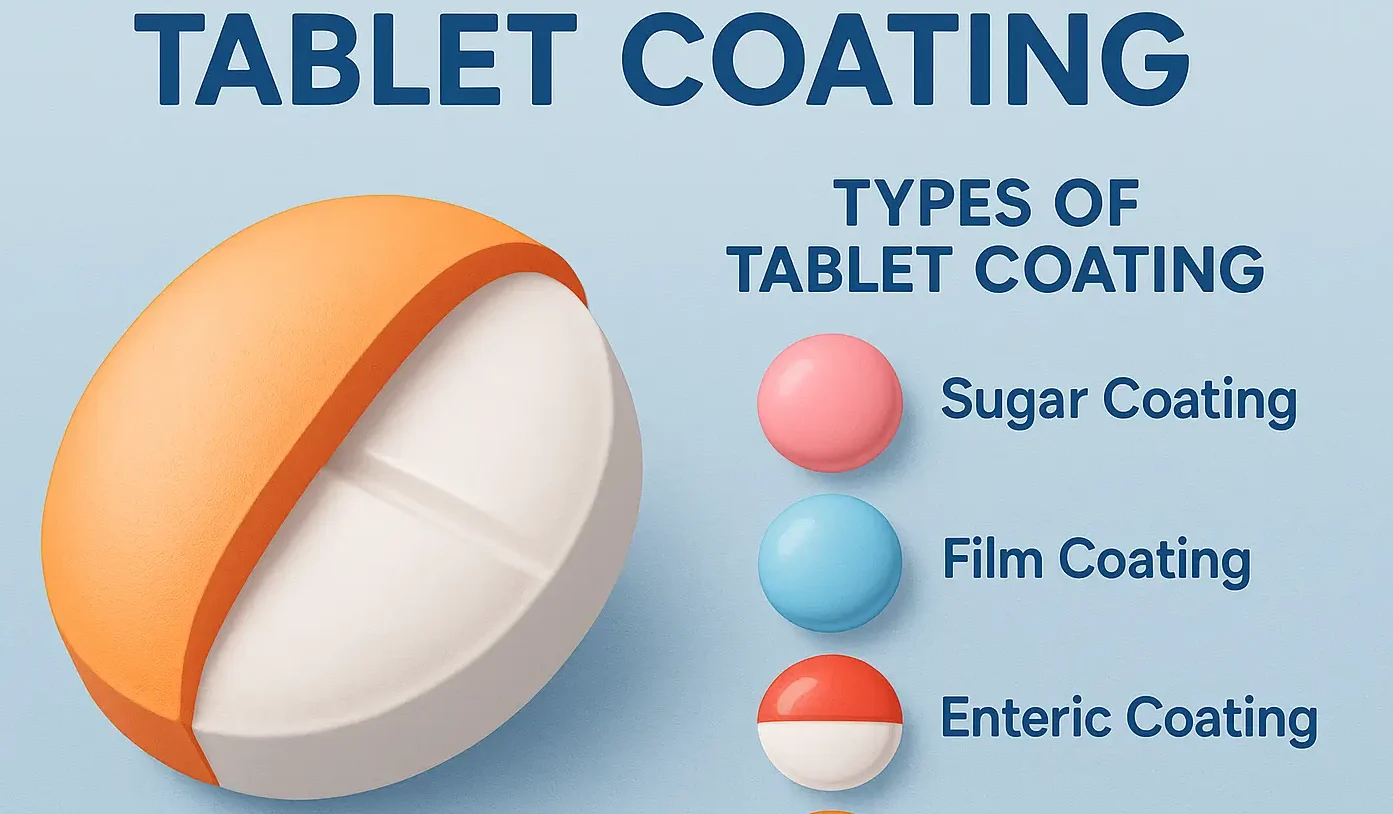Types of Tablet Coating
- Tablet coating is performed for various reasons: masking taste or odor, improving appearance, protecting the drug from the environment, or modifying drug release.

-
Sugar Coating
- Traditional method involving multiple layers of sugar-based solution.
- Advantages: Appealing appearance, good taste masking.
- Disadvantages: Time-consuming, significant increase in tablet size and weight, skilled labor required.
-
Film Coating
- Application of a thin polymeric film onto the tablet surface.
- Advantages: Faster, minimal weight increase, durable, can be functional (enteric or sustained release).
- Disadvantages: Possible organic solvent use (unless using aqueous-based coatings) and need for specialized equipment.
-
Enteric Coating
- Special type of film coating that resists gastric pH but dissolves in the intestinal pH.
- Purpose: Protect acid-labile drugs or protect the stomach from irritant drugs.
-
Press Coating (Compression Coating)
- Dry coating method where a core tablet is compressed into a coating layer.
- Advantages: No liquid involved, suitable for moisture-sensitive drugs, possible for controlled release.
-
Functional Coatings
- Sustained/controlled release
- Targeted release coatings (e.g., colonic release).
Thank you for reading from Firsthope's notes, don't forget to check YouTube videos!

